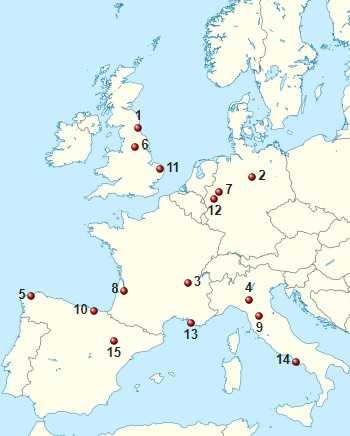
The City Is Ours Trivia Quiz
Big cities will often have a number of major football clubs, reflecting the size of their populations. But sometimes you will find cities that are represented by a single club. Can you match these one-club locations with the clubs they cheer for?
A label quiz
by Red_John.
Estimated time: 4 mins.
- Home
- »
- Quizzes
- »
- Sports Trivia
- »
- Soccer
- »
- Europe
